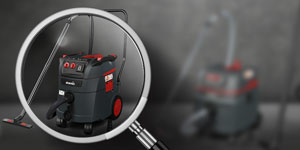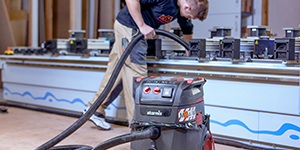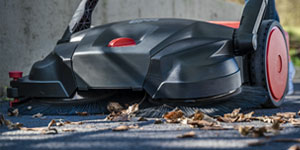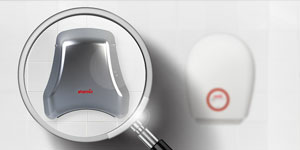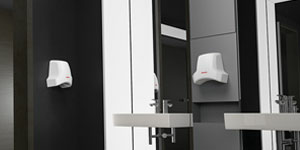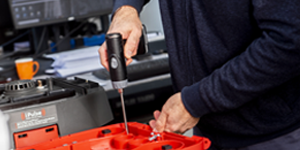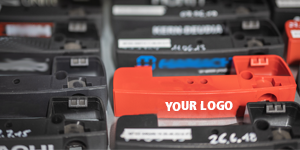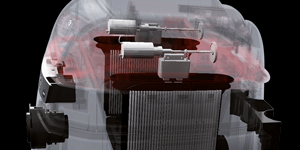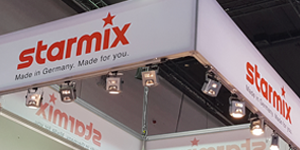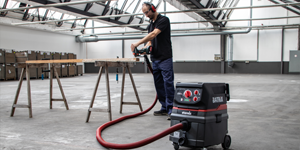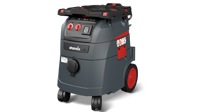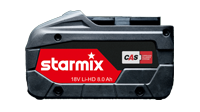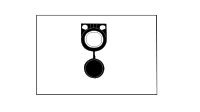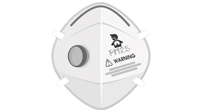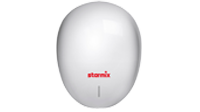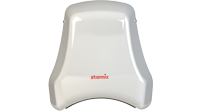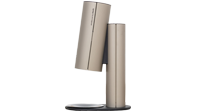FAQ: You have questions?
We have the answers.
We have collected and answered the most frequently asked questions about our products.
Select and appropriate category or use the sear function directly.







3 LEDs = 60% capacity
30 seconds before the battery is empty, the last LED flashes for 3 seconds and a hoot sounds (only for M vacuums)







- Dust (a certain dust concentration is necessary)
- Air (oxygen)
- Ignition source (a minimum ignition energy must be exceeded).
Legal framework conditions apply to the different dust classes. They are described in the international standard IEC 60 335-2-69, which divides dusts into three different dust classes: L, M and H.
Dust class L (low hazardous dust):
Simple and harmless dusts such as house dust and materials like soil or lime. The dusts have AGWs of > 1 mg/m3. For L vacuums, the filter material is tested. The max. permeability is less than 1%. There are no special disposal regulations.
Dust class M (medium hazardous dust):
All wood dusts as well as dusts from putty, filler and varnish, plaster, cement, concrete, tile adhesives and paints such as latex and oil paints or materials containing quartz such as sand and pebbles. Here AGWs of > 0.1 mg/m3 are available. M-vacuum cleaners are tested by the test center as a complete unit. The max. permeability is less than 0.1% and the disposal must be low-dust.
Dust class H (high hazardous dust):
This class includes dusts with all exposure limits, all carcinogenic dusts, dusts with carcinogenic and pathogenic particles, and dusts with mold spores, silica sand, lead, asbestos, mineral fibers, bitumen, and artificial mineral fibers such as glass wool. These vacuums are also tested as a whole unit and the max. transmittance is less than 0.005%. The disposal must be carried out dust-free.
Dust class H-Asbestos:
This class corresponds to dust class H, but in Germany the vacuums must have an additional test according to TRGS 519, which entitles them to pick up and separate asbestos.
See overview "Dust classes
No runtime change possible
TT 1800 E / T 500 E:
Adjustment of switching distance continuously possible via adjusting potentiometer on the electronic plate
T 60 E:
Adjustment of switching distance infinitely variable via potentiometer on the electronic plate possible
T 80 E:
Adjustment of switching distance infinitely variable via setting potentiometer on the electronic plate possible
ST 2400:
Adjustment of running time infinitely variable possible (approx. 30 - 120 sec.)
ST 2400 E:
Adjustment of switching distance not possible
a) Fixed connection
b) Connection with connection cable/plug (is included in the scope of delivery)
b) via fixed connection
XT3001:
a) fixed connection
b) also possible with connection cable (not included in delivery)
The running time is set to 4 minutes at the factory, but can be adjusted between 30 seconds and 8 minutes by a qualified electrician.
a) standard equipped with pre-assembled connection cable with contour plug
b) via fixed connection
TB 60 - series:
a) designed for fixed connection through a mounting plate
b) also possible with connection cable
TH / TB 80 - series:
a) Designed for fixed connection
b) Also possible with connection cable
a) Fixed connection
b) Also possible with mains connection cable (included in delivery)

You can determine the right sweeper for your application based on the following criteria:
1. how large is the area to be swept?
2. how often do you sweep?
3. how clean does the area need to be?
For small areas (approx. 250-500 m²) and occasional sweeping, we recommend the Starmix 355 (55 cm sweeping width) and 375 (75 cm sweeping width) for around the house. The 375 model also has an additional cross-mounted sweeping roller that picks up particularly fine dirt.
For larger areas (up to 1,000 m²) and regular sweeping, we recommend the Starmix 477 (77 cm) and Starmix 497 (97 cm - up to 2,000 m²) professional sweepers, all also with the turbo sweeping system - 2 disc brooms in front and a transverse fine dirt sweeping roller.
For very large areas (up to 2,500 m²) and regular sweeping, our battery-powered professional sweepers 677 (77 cm) and 697 (97 cm) score highly.
Level 1 -2: for all hard surfaces, such as asphalt, concrete, slabs.
Level 3 - 4: for more uneven surfaces, e.g. washed concrete slabs as well as for damp leaves. For more uneven surfaces, such as cobblestones, cobblestones (with a height difference of max. 1 cm)
Level 5 - 8 is recommended. With these higher settings, it should be noted that the sliding resistance also increases.
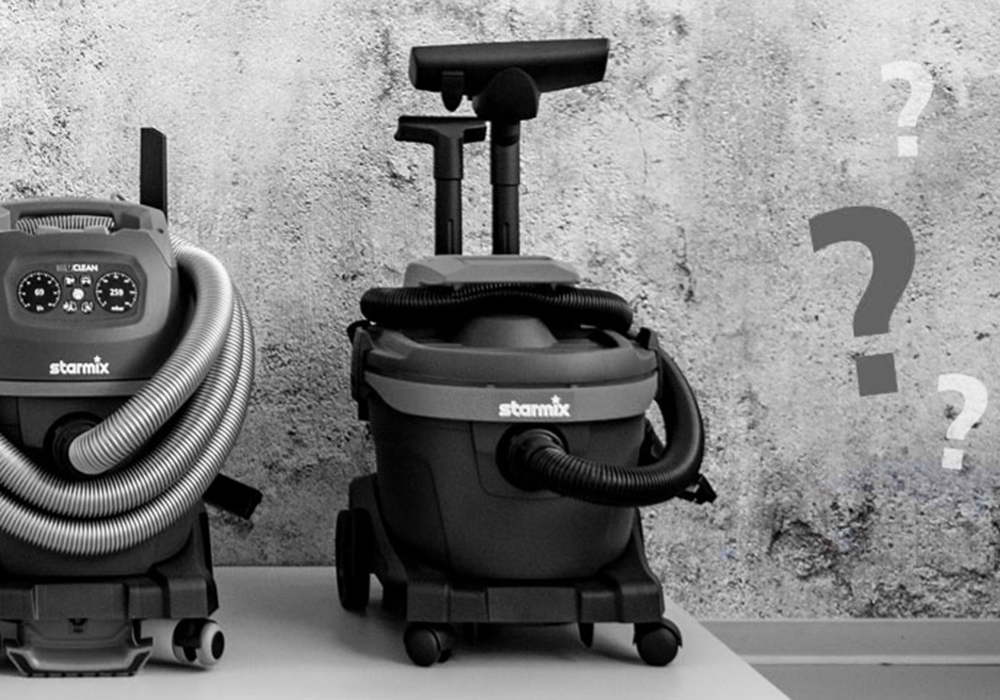
The right question was not there?
The FAQs could not clarify your question marks?
Or new questions have arisen?
